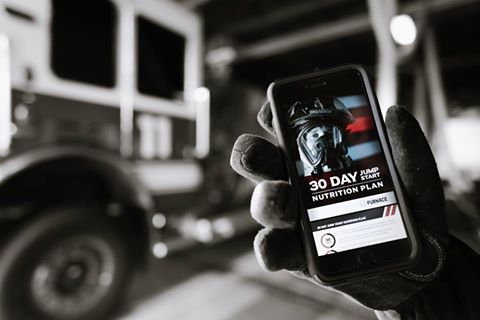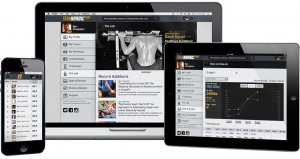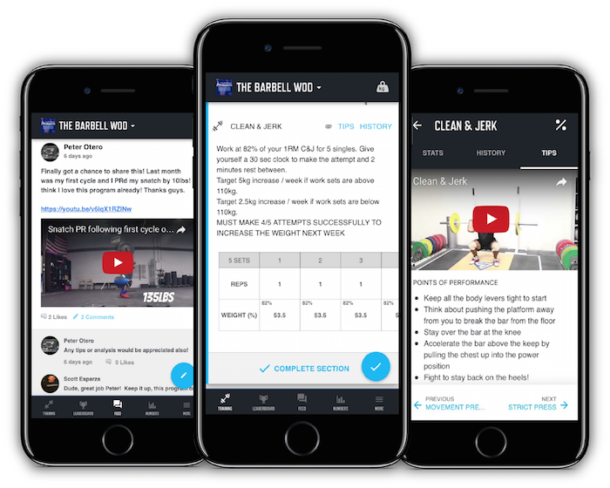fd athlete probie guide
Here you’ll find additional information, FAQ’s and links to helpful resources and professional coaching
Performance Nutrition Course
Access our firefighter-specific nutrition course here, designed to optimize performance both on the scene and in the gym.
annual fitness assessment
Learn Dashboard
PRogram faq’s
how to read the weight recommendations for FDX
With the FDX program we will prescribe weights for individuals. We give two different weights for each gender (RX – Advanced)/(Scaled – Beginner)
It is to be read as (Male RX/Female RX)|(Male Scaled/Female Scaled)
For example:
4 Rounds for Time:
- 10 Deadlifts (225/155)|(135/95)
- 10 Pull Ups
Advanced men do 225lbs and beginner men do 135lbs
Advanced women do 155lbs and beginner women do 95lbs
*It’s important that you enter your score as RX or Scaled. If you scale any movement such as weight, distance, reps… Please un-click the RX button to save your score as scaled.
Do not think you have to go RX. Sometimes it’s better to scale to work on technique and form.
how to read the rpe scale
RPE, or Rate of Perceived Exertion, serves as a gauge of how much effort you feel you’re putting into a workout, as well as how demanding a specific weight feels relative to your personal fitness level. It’s a measurement that’s entirely individualized to YOU, based on your own sensations and how you personally experience the weight.
We use a 1 to 10 scale to represent RPE, where 1 signifies the least amount of effort and 10 indicates the most challenging level.
Each number on this scale corresponds to an estimated percentage of your perceived exertion out of 100% (for instance, 1 equals 10%, 2 equals 20%, and so on, culminating in 10 representing 100%).
You can also align this with a percentage of your maximum capacity. For instance, if you’re tasked with executing 7 sets of 2 back squats at an RPE of 7, aim for approximately 70% of your maximum strength.
We apply RPE values to both workout and strength components to offer guidance for your performance. If a workout is designated as RPE 7, the aim is for you (and the workout itself) to feel like you’re exerting around 70% of your total perceived effort.
Similarly, if a strength exercise is labeled as RPE 9, the goal is for you (and the lift) to feel like you’re using approximately 90% of your total perceived effort.
When it comes to setting your target number of repetitions, consider using a scale where 10 minus your RPE equals the number of reps you have left in the tank, also known as Reps in Reserve (RIR). For instance, if your target RPE is 7, aim to have 3 reps in reserve after your last rep. This means 10 minus 7 equals 3 RIR.
how to read the tempo instructions (31X1)
We will use a tempo style in both programs.
For example, if you see 4×5 Bench Press (31X1) it means:
- 3 seconds slow and controlled down
- 1 second hold at the chest
- X explode up
- 1 second reset at the top
The tempo always starts at the beginning of each lift.
This is to help you improve strength and stability.
How to understand the workout type
EMOM (Every Minute On the Minute): In an EMOM workout, you perform a specific exercise or set of exercises at the start of every minute for a designated amount of time. The remainder of the minute is your rest period.
AMRAP (As Many Rounds As Possible): In an AMRAP workout, you aim to complete as many rounds of a set of exercises as possible within a specified time frame. You perform the given exercises consecutively without a set rest time.
For Time: This type of workout involves completing a prescribed set of exercises as quickly as possible. The goal is to finish the workout in the shortest amount of time.
Tabata: Named after Dr. Izumi Tabata, this format involves 20 seconds of high-intensity exercise followed by 10 seconds of rest. This cycle is repeated for a total of 4 minutes.
Chipper: In a chipper workout, you have a list of exercises that you must complete in order. Once you finish one exercise, you move on to the next until you’ve completed the entire list.
How to enter your score within the app
This will apply to FDX mostly but you will also need to keep score on FD Build some days.
Depending on the workout, you’ll enter your score as:
1. Weight – The heaviest weight used in the lifting section.
*If you’re using 50lb dumbbells, your score is 50, not 100
2. Time – This will depend on your workout but most days you’ll enter your time for a given assignment.
3. Rounds and Reps – This will be for workouts that involve as many rounds as possible. For example, If I ask you to do as many rounds as possible (AMRAP) in 12 min of 20 deadlifts and 20 cals and you do 5 complete full rounds plus 8 deadlift reps, your score will be 5.08
Please be truthful!
*It’s important that you enter your score as RX or Scaled. If you scale any movement such as weight, distance, reps… Please un-click the RX button to save your score as scaled.
HOW to MEASURE DISTANCE ON THE STREET
If you have no way to measure distance for our running workouts, you can pre-measure areas around your home or department. 50m is about 65 walking paces and 100m is about 130 walking paces. For a 400m run, I will run to the 100m mark and back 2x.
how to change programs
Simply go to profile – settings – my training and enter the code there. It will automatically show on your calendar. You can put all programs on your calendar or toggle which ones you want to see. Simply go to calendar and select the toggle button next to the date then pick and choose which ones you want to see.
CODES:
FDX400
FDBUILD300
FDIGNITE200
FDFOUNDATION100
how to cancel your membership
** Only applicable for FD Athlete Individual Membership
While we’d be sad to see you go, we understand that fitness journeys take unexpected turns. Your dedication to trying speaks volumes about your commitment, and we’re always rooting for you!
Cancelling is easy: just head to firefighterfurnace.com/contact or click “Contact Us” on our website. Before you go, we’d love to hear what we could do differently to earn your future business. We’re constantly evolving, and your feedback is invaluable.









